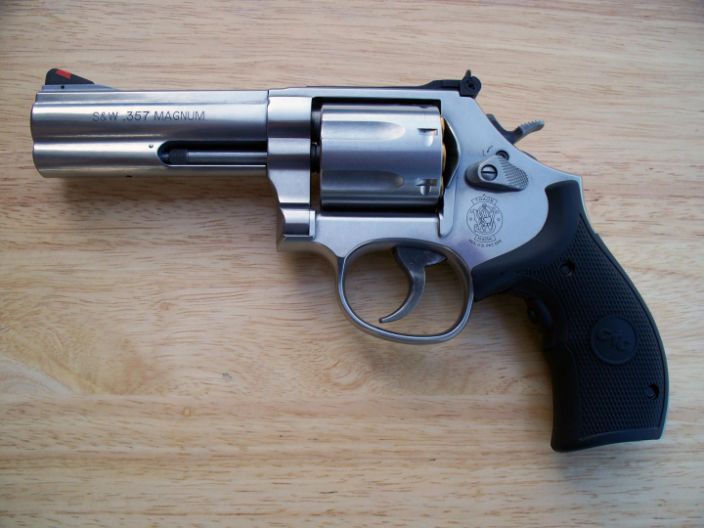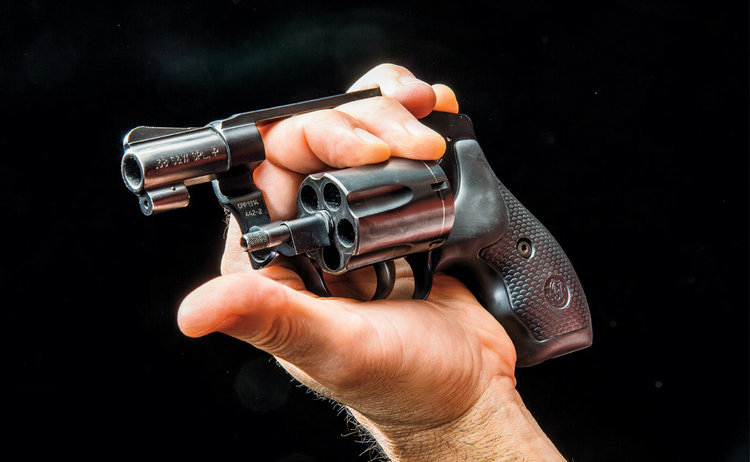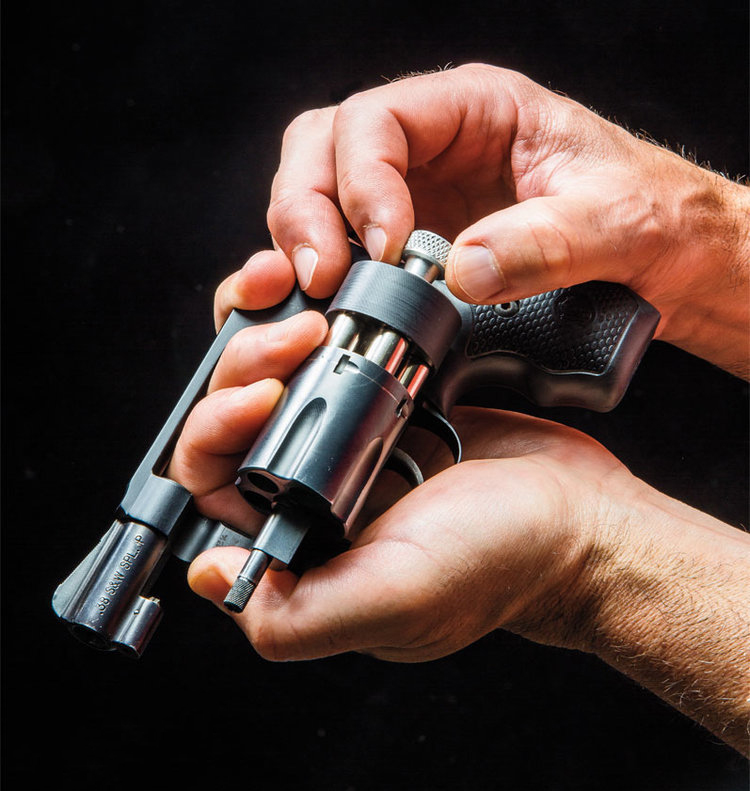The new model brings the revolver back to the road of revival of the daily carry (EDC). Smith & Wesson, Colt, Ruger and even Kimber have recently released new revolver products, and these companies have just started production, the shooting masses have already obtained it first
Smith & Wesson, Colt, Ruger and even Kimber have recently released new revolver products, and these companies have just started production, and the shooting masses have already obtained them first. But why? Why can this old design with more than 100 years of history still sell so hot, even if the production company has just launched them to the door? The answer is simple: because they work.

Sometimes the market is wrong, the product will succeed because of the hype of some Internet brand promoters who don’t know where to come from, and some products are foreseen to succeed because the true advocates of the brand refuse to stop spreading the gospel . The story about modern revolvers is the latter. Despite constant voices about its demise and the assumption that they are old and outdated, revolvers still have something that semi-automatic pistols of the same size do not have.

In terms of ballistics, the impact force of revolvers exceeds their own weight level. Comparing two Smith & Wesson products, the Bodyguard semi-automatic pistol has a small .380 (.380 ACP) caliber, which is one ounce lighter than the .357 Magnum caliber M&P 340. Now, I don’t know what you guys will do, but if I need to shoot something, I prefer to hit it with .357 Magnum. Or at least +P.38 Special. Because I love all of you, I will tell you how I really feel about .380. I can’t imagine that I would recommend a .380 under any circumstances except the last backup or the third pistol.
Another reason why revolvers are still valuable is because of the simple, rugged design, the shooter can easily operate under pressure, especially at the common self-defense distance. Although most double-acting triggers (DA) on the left wheel are not as good as single-acting (SA) or safety triggers (similar to GLOCK's trigger-type safety devices), they are perfectly suited for their intended shooting distance. In the hands of the right person, it Yes, and it has been proven to be very effective at distances of 50 yards or more. To skip the trigger pressure, the immediate action drill (immediate action drill) of the double-action revolver is the first reaction technique after a firearm failure. For the automatic pistol, it is to shoot the bottom of the magazine-pull the sleeve to exit the failed ammunition-release the sleeve Bouncing the barrel is much simpler for the left wheel. Pulling the trigger directly for the next shot is impossible to defeat; you just need to pull the trigger again. There is no need to shoot the magazine or pull the sleeve, just keep the sight on the target and then pull the trigger again to turn the other round of ammunition into position.
Another reason was thrown out from time to time. Although it sounds a bit excessive, my training and experience as a police officer have repeatedly confirmed that the revolver performs very well in contact at very close range. In training and a review of street gunfights, I have seen several semi-automatic pistols fall off the chain in this type of battle. This happened frequently enough, so my personal backup pistol was a revolver.
Modern revolvers have some disadvantages. As mentioned before, the trigger problem, but this can be used to slowly, but we need a little time to reach the training point. At the same time, the lighter gun body, but it has a more powerful caliber of ammunition, which will result in a considerable recoil when shooting. In a recent training class at Gunsite Academy, I spent a lot of time on the new Kimber K6s revolver. After shooting about 50 rounds of Hornady Critical Defense125 grain FTX ammunition, I hurried back to more pleasant The 125 grain. 38 Special American Gunner bullets. I am not particularly sensitive to the back seat, but .357 is not a joke. Fortunately, it is easier to adapt to the more comfortable .38 bullets through training, and those larger calibers are reserved for more focused people.
Entering the whole practice and training aspect, my horizons have been broader in the Gunsite training class mentioned above. I think my revolver shooting skills are in line with normal standards, but they are not. Although my skills are not completely messed up, it is very obvious that I need to spend more time on changing bombs. The two most common methods for reloading revolvers are quick bridge clamps and quick loaders, each of which has its own advantages and disadvantages.
In terms of covert reloading, the fast bridge clamp is difficult to beat. It is a polymer bridge clip with notches to line up bullets. The most common way to set the bridge clamp to fire a five-round revolver is to put three rounds together, leaving a little space, and then put two rounds together. The space between them can provide a mark when grasping the bridge clamp, allowing the shooter to press one or two shots at a time when the bullet is pressed into the wheel. After the bullets are pressed into the runner, gently peel the bridge clip back and the bullet will completely enter the runner. Because the bridge clamp can be stretched straight, it is easier to use as a hidden tool for changing bombs, but even for those with frequent training, it is still a slower option for changing bombs.
If you want to change bombs more quickly, you can only use the quick bomber. The quick loading device is a metal or plastic wheel, and the bullets are arranged in a circular arrangement, which corresponds to the position of each bullet on the revolver's revolver. The bullet is held in place by twisting the detent controlled by the central post. The shooter simply opens the pistol's runner, aligns the bullets, pushes them into the barrel, and then twists the center post to release the bullets and let them fall into the runner. Finally, close the runner to discard the ejector. The problem with the Quick Loader is that it has the same circumferential diameter as the revolver of the left wheel, which makes it less easy to covertly carry in daily carrying (EDC), so it is not so ideal in EDC. Of course, you can also use clothing to cover, but then you need a larger number of loose sagging clothes that may not suit your style. Personally, when I carry a revolver, I prefer to carry a quick bridge clip, because I want to bring spare ammunition and I don’t want to wear clothes that are too loose and the hem is too long.

The efficient revolver reloading process is more important than choosing the way you like to send the bullet into the chamber. Unlike changing the magazine for the semi-automatic pistol, the quick revolving movement of the left wheel also includes releasing the left wheel grip and handing it to the supporting hand. When the supporting hand wraps the pistol, use the main hand to push the lever to release the runner. Use the middle finger, ring finger and little finger of the supporting hand to push the runner out of the gun frame from right to left. Once the runner is pushed out, turn the revolver with the muzzle facing up, the thumb of the supporting hand presses the ejector lever, and the empty shell is pushed out of the bore. Then the muzzle was turned down and the new bullet was put into the runner with the main hand. After the bounce is completed, the thumb of the supporting hand closes the runner, and then the left wheel is returned to the main hand, at which time it can be used to fire at the target again. The entire reloading technique sounds complicated, but it can be fully mastered after a little careful practice.
As mentioned above, the trigger of a double-action revolver requires some practice to adapt perfectly. Similar to modern revolvers like Kimber K6s and Ruger LCR, manufacturers have tuned the double-acting trigger quite well, very smoothly, and the trigger force is light enough for most shooters. Of course, more traditional double-action revolvers can also be good guns that are easy to shoot after being cared for by good gunners. When shooting with the revolver, hold the grip as high as possible, and use the same force from beginning to end to press the trigger to the end. Do not let the trigger move feel "layered". This provides more consistent grip tension, making it easier for you to keep the sight on the target. I don’t recommend double-action revolvers for inexperienced or weaker shooters, and I don’t agree when I hear someone recommend it to beginners. It is not a gun that a beginner can control.
The revival of revolvers and practical and effective self-defense equipment have been brought back to the forefront. Although it may not be the best answer to all self-defense problems, modern double-action revolvers already have their place in the collection of shooters who really focus on personal defense.
 English
English German
German French
French Russian
Russian Spanish
Spanish Japanese
Japanese Korean
Korean Portuguese
Portuguese Ukrainian
Ukrainian Arabic
Arabic Italian
Italian Afrikaans
Afrikaans Albanian
Albanian Armenian
Armenian Azerbaijani
Azerbaijani Basque
Basque Belarusian
Belarusian Bulgarian
Bulgarian Catalan
Catalan Croatian
Croatian Czech
Czech Danish
Danish Dutch
Dutch Estonian
Estonian Filipino
Filipino Finnish
Finnish Galician
Galician Georgian
Georgian Greek
Greek Haitian Creole
Haitian Creole Hebrew
Hebrew Hindi
Hindi Hungarian
Hungarian Icelandic
Icelandic Indonesian
Indonesian Irish
Irish Latvian
Latvian Lithuanian
Lithuanian Macedonian
Macedonian Malay
Malay Maltese
Maltese Norwegian
Norwegian Persian
Persian Polish
Polish Romanian
Romanian Serbian
Serbian Slovak
Slovak Slovenian
Slovenian Swahili
Swahili Swedish
Swedish Thai
Thai Turkish
Turkish Urdu
Urdu Vietnamese
Vietnamese Welsh
Welsh Yiddish
Yiddish




